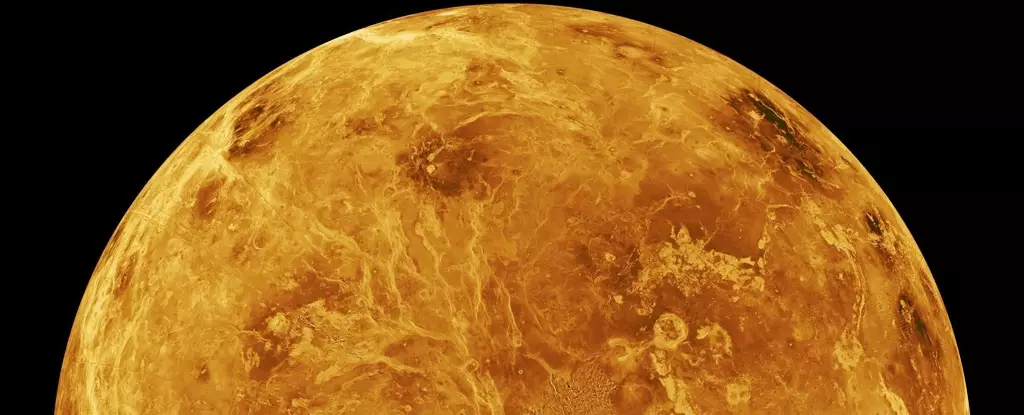In the early epochs of our Solar System, the cosmic landscape was a cauldron of chaos—a tumultuous environment filled with colliding celestial bodies. As protoplanets formed, they were incessantly bombarded by debris, leading to the formation of pockmarked surfaces that we observe today on Mercury, Mars, and the Moon. Earth, too, has its share of scars, but geological activity has mostly erased evidence of its violent past. In stark contrast, Venus, cloaked in an atmosphere thick enough to crush metal, presents an enigmatic surface that challenges our understanding of planetary evolution. While impact craters abound on Venus, the absence of large impact basins raises questions about its geological history and the processes that shaped it.
Recent research has begun to shed light on one of Venus’s most fascinating features: the tessera terrain. Unlike other planets that exhibit large impact basins, Venus displays a network of concentric rings covering vast areas. Scientists have long speculated about the origins of these ring structures, and new findings regarding the Haastte-Baad Tessera suggest that they may be ancient remnants of massive impacts. This feature spans approximately 1,500 kilometers and hints at a dramatic past shaped by two colossal impacts occurring in quick succession over three billion years ago.
Geologist Vicki Hansen from the Planetary Science Institute speculates that these findings mark a turning point in our understanding of Venus’s rocky shell. The identification of such an extensive and ancient impact structure could provide insights into the dynamic processes that occurred during the planet’s formative years. Hansen asserts that this revelation, if validated, would be monumental, as it would illustrate the diversity of impact structures across different planetary bodies.
The modeling analyses conducted by Hansen and her team point toward a double impact scenario, given Venus’s history of extreme geological conditions. At the time of these impacts, Venus’s crust was comparatively thin, about 10 kilometers deep, comprising molten material beneath a fragile exterior. The consequences of two successive impacts would have cascaded massively, breaching the surface and reaching the molten mantle below. This intrusion of material could trigger eruptions of magma, leading to the distinctive concentric patterns characteristic of the tessera terrain.
This hypothesis bears similarities to scenarios observed in other celestial bodies, such as the multi-ring impact structure on Jupiter’s moon, Callisto. The famed Valhalla structure, significantly larger than the Haastte-Baad, supports the idea that impacts can have profound effects on planetary geology across varying environments. The formation processes identified in these scenarios encourage us to consider the unique implications of different planetary compositions and conditions.
A critical aspect of the tessera formation lies in understanding the aftermath of the possible impacts. When the mantle partially melts due to the force of the collisions, it leaves behind a residue, termed residuum. Interestingly, despite being denser, the solid residuum is buoyant compared to the surrounding mantle due to its specific structural characteristics. This buoyancy can play a pivotal role in raising the tessera terrain—essentially creating a geological “air mattress” effect beneath the surface.
Hansen’s analyses suggest that the lava that emerges from beneath could either solidify at an elevated position or drain away, resulting in subsidence. Such mechanisms could effectively explain the flat and low-lying aspects of the tessera terrain, which differ strikingly from the anticipated large craters. This unexpected realization further challenges preconceived notions about what impact features are supposed to look like, particularly on a planet like Venus.
The findings concerning the Haastte-Baad Tessera could significantly reshape our understanding of planetary evolution, particularly regarding the consequences of impact events. It underscores the importance of location and composition in interpreting planetary features. Earth’s geological history is full of implicit assumptions about the nature of impacts, but the example of Venus demonstrates that various pathways can lead to similarly impactful yet visually distinctive outcomes.
As we continue to explore both Venus and other planetary bodies, the study of tessera terrain will remain crucial for interpreting the histories of rocky planets. This research not only opens doors for discussions about Venus’s depths and outer formations but also may ultimately refine our broader understanding of how planetary systems evolve through millennia of violence and chaos.


Leave a Reply